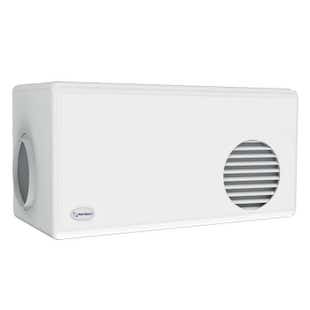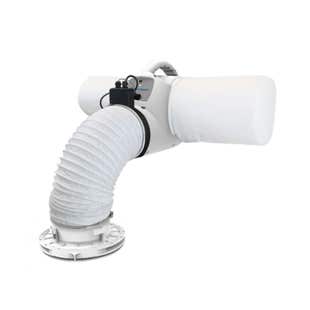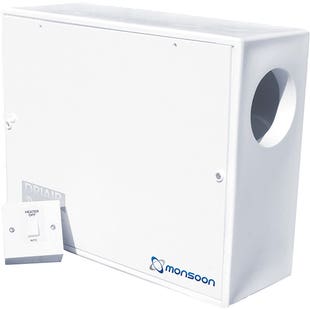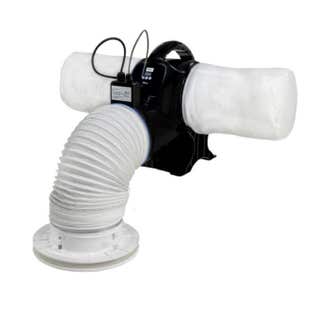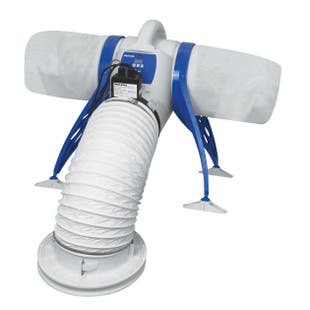-
-
Monsoon Energysaver Compact Positive Input Ventilation System - PPS/W/H
Product Code: PPS/W/H
£426.99 £355.82 -
Manrose Lo-Watt Pivotal Positive Input Ventilation Unit - MANPIV
Product Code: MANPIV
£286.33 £238.61 -
Monsoon Positive Pressure Condensation Control Unit - Loft Model - PPS/L/H
Product Code: PPS/L/H
£415.97 £346.64 -
Vent Axia PureAir Home Positive Input Ventilation (PIV) with Heater (479091)
Product Code: 479091
£360.16 £300.13 -
Manrose Replacement G4 Filter Set for Lo-Watt Pivotal - MANPIVG4
Product Code: MANPIVG4
£82.08 £68.40 -
-
Manrose Lo-Watt Pivotal Positive Input Ventilation Unit with 500W Heater - MANPIVH
Product Code: MANPIVH
£332.49 £277.07 -
Help us stock the items you need
If there is something you require that is not on our site, simply give us a call on 01424 220384 or send us a message via our contact form and we’ll do our best to get it added to our online electrical wholesale store.
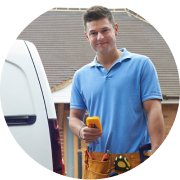

Positive Input Ventilation (PIV) is a type of ventilation system that helps improve indoor air quality by bringing in fresh, filtered air from the outside.
Are you suffering from condensation and mould? Then a Positive Input Ventilation system could be the solution to your problem!
Approximately 58% of people suffer from mould and condensation in their homes. Activities such as cooking, cleaning and bathing can generate up to 10 litres of moisture a day and with homes becoming more insulated it can make it more difficult for moisture and chemicals to escape.
Positive input ventilation (PIV) is a mechanical ventilation system used to improve indoor air quality in buildings. It introduces a steady stream of filtered, fresh air into the building, which helps dilute and remove indoor pollutants such as carbon dioxide, volatile organic compounds (VOCs), and humidity.
PIV systems can be used in both residential and commercial buildings to help improve indoor air quality, reduce the risk of respiratory issues, and create a more comfortable living or working environment.
PIV systems are particularly useful for homes and buildings with poor natural ventilation or high levels of pollution. Two popular brands of PIV systems are Vent Axia PureAir Range and Monsoon Positive Pressure Range. Both of these brands offer high-quality PIV systems that are designed to efficiently and effectively improve indoor air quality. With Vent Axia PureAir and Monsoon PIV systems, you can enjoy fresher, cleaner air inside your home or building.
Frequently asked questions about positive input ventilation (PIV):
-
What is positive input ventilation?
Positive input ventilation is a type of ventilation system that introduces fresh air into a building or home. It works by drawing in fresh air from the outside and distributing it throughout the building, replacing stale indoor air.
-
How much does a PIV cost to run?
The cost of running a PIV system will depend on a number of factors, including the size of the unit and the cost of electricity in your area. In general, however, PIV systems are relatively energy efficient and should not be a significant burden on your energy bill.
-
Does positive input ventilation make your house cold?
PIV systems do not typically make a house cold. In fact, they can help to regulate the temperature of a building by introducing fresh air from the outside. However, if the air being introduced is significantly colder than the indoor air, it could temporarily lower the overall temperature of the building.
-
Are PIV units worth it?
Whether or not a PIV unit is worth it will depend on your specific needs and circumstances. PIV systems can be an effective way to improve indoor air quality and reduce the build-up of moisture, which can lead to issues like mold and mildew. If you are concerned about the air quality in your home or building, a PIV system could be worth considering.
-
What is the difference between positive and negative ventilation?
Positive ventilation refers to the introduction of fresh air into a building or home. Negative ventilation, on the other hand, involves the removal of stale indoor air from a building. Both types of ventilation systems can be effective in improving indoor air quality, but they work in slightly different ways.
-
What does positive input mean?
Positive input refers to the introduction of something into a system or process. In the context of ventilation, positive input refers to the introduction of fresh air into a building or home.
What are the main disadvantages of positive ventilation system? Some of the main disadvantages of positive ventilation systems include:
- They require a source of power to operate
- They may be more expensive to install and maintain than other types of ventilation systems
- They may be noisy
- They may not be suitable for all types of buildings or climates
-
Are PIV units noisy?
PIV units can be noisy, especially if they are not installed properly or if they are not properly maintained. However, newer models of PIV units are typically much quieter than older models.
-
Will installing Positive Input Ventilation cost me more to heat my home?
According to the Building Research Establishment, Positive Input Ventilation (PIV) systems can save up to 10% on space heating costs when compared to extract fans with the same flow rate. This is because PIV systems draw in fresh air from the outside through the loft space, rather than directly from the outside. As a result, the loft space remains about 3°C warmer than the outside air, which is more energy efficient. In contrast, extract fans remove indoor air and replace it with cold air from the outside.
-
Do I need trickle vents with a PIV system?
Trickle vents are small openings that allow air to enter a building or home. They are often used in conjunction with PIV systems to provide a constant supply of fresh air. Whether or not you need trickle vents with a PIV system will depend on the specific requirements of your building and the climate in which you live.
-
What is negative input?
Negative input refers to the removal of something from a system or process. In the context of ventilation, negative input refers to the removal of stale indoor air from a building or home.
-
Does PIV reduce humidity?
PIV systems can help to reduce humidity by introducing fresh, dry air from the outside into a building or home. This can help to lower the overall humidity levels, which can be beneficial in preventing the growth of mold and mildew.
-
Who installs a PIV unit?
PIV units should be installed by a trained and qualified professional. This could be an HVAC technician, an electrician, or a contractor with experience installing ventilation systems.
-
How long does it take for a PIV to work?
The amount of time it takes for a PIV system to start working will depend on a number of factors, including the size of the unit, the size of the building or home, and the overall air quality of the space. In general, however, you should start to notice an improvement in indoor air quality within a few days of installing a PIV system.
-
What is the fastest way to lower indoor humidity?
The fastest way to lower indoor humidity is to increase ventilation. This can be done by opening windows, using exhaust fans, or installing a ventilation system like a PIV unit. Using a dehumidifier can also help to lower humidity levels.
If you’re not sure about quantities, sizes or have any other questions, our sales team will be more than happy to help. Give them a call now on 01424 220384.




